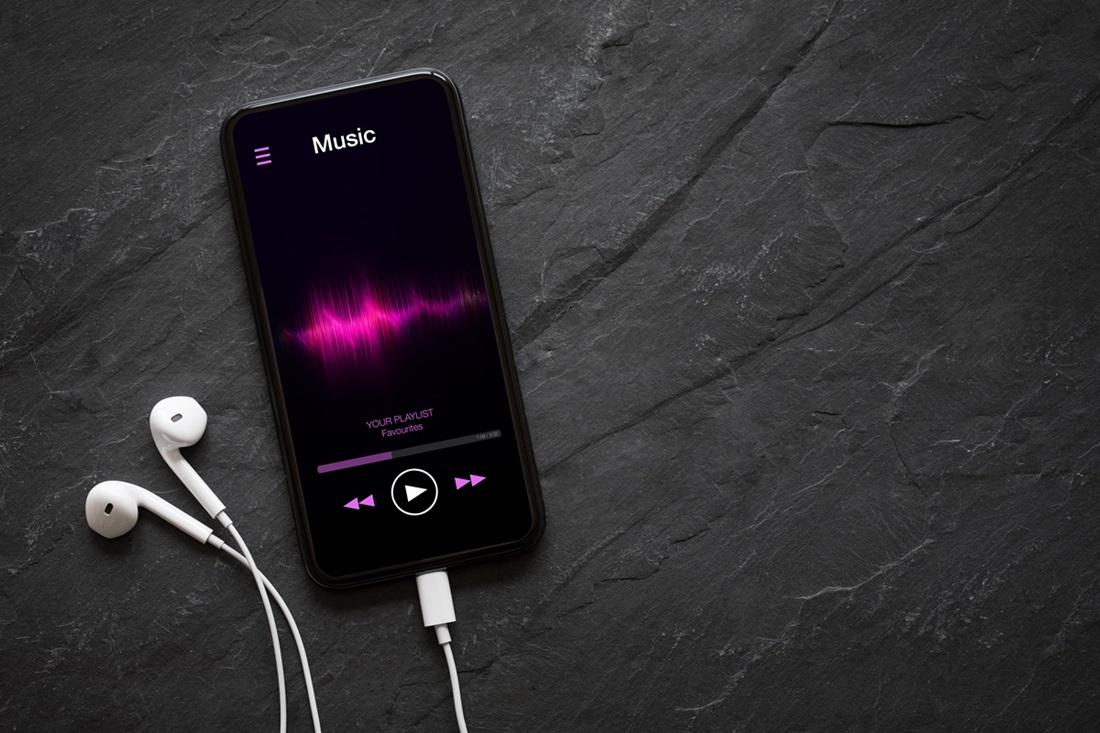Discover how to simplify your routine and achieve more in less time

In times of multitasking, automation has stood out as one of the most efficient strategies for managing routine.
Whether it's simplifying day-to-day activities, organizing tasks at work or optimizing processes in small businesses, automation applications save time and energy.
In this article, we explore how the best automation apps can transform your productivity. With practical examples, must-have tools, and upcoming trends, you’ll learn how to embrace automation effectively.
Best Automation Apps Available in the Market
Automation apps are designed to simplify tasks and streamline workflows, whether in your personal or professional life.
With a wide variety of options on the market, it is important to know the features and differences of each app to choose the one that best suits your needs.
Below, we highlight the best automation apps and how they can transform your routine.
1. Zapier: Powerful and Flexible Automation
Zapier is one of the most popular and versatile automation apps, allowing you to connect over 5,000 apps and create highly customized workflows.
Key Features:
- Connection between Apps: Sync tools like Slack, Google Drive, Trello, Salesforce, and more.
- Custom Workflows: Set up triggers to automatically trigger tasks, such as sending emails or creating records in spreadsheets.
- Simple Functionality: Even without technical knowledge, you can create automations with intuitive clicks.
Practical Example:
Every time a customer fills out a form in Google Forms, Zapier can automatically create a task in Trello and send a confirmation email.
Ideal for:
Marketers, freelancers and small businesses looking to streamline processes and save time.
2. IFTTT (If This Then That): Simplicity and Versatility
IFTTT is a practical solution for simple tasks, allowing you to integrate apps and devices for easy and useful automations.
Key Features:
- Focus on Simplicity: Ideal for beginners who want to start with basic automations.
- Integration with IoT Devices: Connect smart gadgets like light bulbs, security cameras, and thermostats.
- Ready Recipes: The app offers hundreds of pre-configured automations, known as “recipes.”
Practical Example:
Set up IFTTT to automatically save every photo you're tagged in on Facebook to Google Drive.
Ideal for:
Users who want to simplify their daily lives with practical automations, both in their personal lives and at work.
3. Microsoft Power Automate: Complete Enterprise Solution
Part of the Microsoft ecosystem, Power Automate is a powerful tool for companies already using Office 365.
Key Features:
- Corporate Automation: Ideal for creating complex workflows within large teams.
- Integration with Office 365: It works seamlessly with tools like Outlook, Excel, Teams and SharePoint.
- Advanced Functionality: Includes predefined flows and the ability to create detailed automations based on corporate data.
Practical Example:
Set up all emails with important attachments to be automatically saved to a specific OneDrive folder.
Ideal for:
Companies and corporate teams looking to optimize processes and integrate Microsoft tools.
4. Todoist: Automate Personal and Professional Tasks
Todoist is a task management app that includes automations to keep you productive.
Key Features:
- Task Automation: Automatic creation of reminders and notifications based on deadlines or recurring actions.
- Integration with Other Apps: Connects to Google Calendar, Slack, and productivity tools.
- Project Management: Allows you to organize tasks into different categories and projects, keeping everything in order.
Practical Example:
Every time you add an appointment to your calendar, Todoist automatically creates a task with a due date.
Ideal for:
People who need help managing day-to-day tasks, both personal and professional.
5. Trello: Visual Automation for Projects

Trello is widely used for project and task management, with built-in automation features that make teamwork easier.
Key Features:
- Automation Power-Ups: Automatic settings for creating cards, assigning tasks, and organizing lists.
- Clear View: Provides visual dashboards to help you track project progress.
- Flexible Integration: Connects to tools like Slack, Gmail, and Google Drive.
Practical Example:
Whenever a customer fills out a contact form, Trello automatically creates a card in the “Leads” list and notifies the person responsible.
Ideal for:
Teams that need to manage workflows with a visual and organized approach.
6. Notion: Centralization and Custom Automation
Notion combines organization, automation, and personalization into a single, versatile platform.
Key Features:
- Integrated Database: Create automatic tables and dashboards to manage information.
- Automation with API: Connect Notion to other apps to create custom workflows.
- Modular Organization: Everything can be customized, from checklists to detailed reports.
Practical Example:
Configure Notion to automatically update a task table every time a customer submits feedback.
Ideal for:
Creative professionals and teams looking for a complete tool for organization and productivity.
7. ClickUp: Complete Automation for Complex Projects
ClickUp is one of the most complete project management tools, offering advanced automations to facilitate team management.
Key Features:
- Flow Automation: Create automatic rules to move tasks between lists or add tags.
- Visual and Analytical Management: Combine Kanban boards, Gantt charts, and detailed reports.
- Advanced Integrations: Works with 1,000+ apps, including Zapier and Google Workspace.
Practical Example:
Automatically add an “Urgent” label to tasks that are overdue or close to their deadline.
Ideal for:
Companies and teams that deal with highly complex projects and need a robust tool.
How to Choose the Best Automation Application?
With so many options available, choose the app that best suits your needs considering:
- Purpose: Use Zapier or Power Automate for advanced flows; IFTTT for simple, personal automations.
- Required Integrations: Make sure the app connects to the tools you already use.
- Cost-Benefit: Some apps offer limited free plans, while others require subscriptions for advanced features.
- Learning Curve: Opt for intuitive apps like Todoist to start automating quickly.

The Most Popular Apps to Listen to Free Music
Want to listen to music without paying? Check out our list of the best apps to listen to music for free, offline and without ads!
What Are Automation Applications and How Do They Work?
Automation applications have emerged as indispensable allies for those looking to simplify daily tasks and increase productivity.
These tools are designed to perform repetitive actions automatically, connecting different platforms and systems into efficient workflows.
With just a few clicks, you can set up triggers that do everything from sending emails to organizing tasks and files, saving time and reducing errors.
Understanding what these applications are and how they work is the first step to transforming your routine and making the most of the potential of technology.
How do they work?
- Task Definition: You choose which actions to automate, such as sending emails or syncing files.
- Trigger Configuration: An event, such as a new email or the creation of a task, automatically triggers another action.
- Execution: Tasks are performed automatically, without the need for human intervention.
Example: Every time a task is created in Trello, the app can send a message in Slack to notify your team.
These applications allow professionals and ordinary users to integrate different platforms, such as Gmail, Slack, Trello and Google Drive, optimizing processes and reducing human errors.
Benefits of Automation in Daily Productivity
Imagine a day when repetitive tasks are performed automatically, freeing up your time and energy to focus on what really matters. That’s the power of automation in everyday productivity.
By integrating applications and systems, it is possible to eliminate manual work, reduce errors and create a more efficient and organized routine.
Whether in your professional or personal life, automation has become a powerful ally, offering benefits ranging from saving time to improving focus and well-being. Let’s explore how this technology can transform your routine.
1. Reduction of Repetitive Tasks
Manual activities like organizing files or responding to emails take up valuable time. With automation, these tasks are performed automatically, freeing up your attention for more important tasks.
2. Increased Focus
Automation eliminates distractions caused by operational tasks, allowing you to focus on strategic and creative projects.
3. Greater Accuracy
Errors in manual activities, such as typing or calculations, are minimized when processes are automated.
4. Increased Productivity
By delegating tasks to the system, you save time that can be directed to more valuable activities.
5. Improved Well-Being
With fewer tasks to accumulate, automation reduces stress and promotes a better work-life balance.
Companies and individuals who adopt automation often report significant gains in time and efficiency, highlighting the positive impact of these applications on routines.
How Automation Apps Help Organize Personal and Professional Tasks
Automation applications are extremely versatile, helping both in personal life and in the workplace.
In the Professional Environment
- Project Management: Automate task creation, automatically delegate responsibilities, and receive progress updates.
- Sending Reports: Set up automatic weekly reports to keep your team informed.
- Tool Integration: Connect platforms like Trello, Slack, and Google Drive to avoid rework and facilitate communication.
In Personal Life
- Automatic Reminders: Schedule notifications for important events like bill payments or doctor appointments.
- Wellness Routines: Set reminders to drink water, take breaks, or exercise.
- Organizing Photos and Files: Use apps like Google Photos to automatically organize your images into themed albums.
With these applications, you keep track of priorities and prevent important details from being forgotten.
Email and Notification Automation: Tools to Facilitate Communication
Emails and notifications are essential, but they can become overwhelming without organization. Automation helps you manage them efficiently:
- Automatic Responses: Set up away messages or default replies for frequent emails.
- Advanced Filtering: Automatically sort messages into categories like promotions, work, or personal.
- Relevant Alerts: Receive notifications only for priority messages, reducing unnecessary distractions.
Tools like Gmail and Outlook offer native automation options that simplify managing messages and alerts.
Automation at Work: Integrating Tools and Workflows

Automation in the workplace is a trend that is here to stay, allowing teams to optimize processes, reduce errors and save time for strategic activities.
Integrating tools and creating automated workflows is transforming office productivity by connecting different platforms and ensuring tasks flow seamlessly.
Benefits of Automation at Work
- Reduction of Rework: Automating repetitive tasks eliminates the need to manually perform the same actions over and over again, such as updating spreadsheets or responding to standard emails.
- Agility in Processes: Automated workflows ensure tasks are completed faster, without relying on manual approvals.
- More Efficient Communication: Integrations between tools like Slack and Trello help keep everyone aligned without the need for constant meetings.
- Greater Focus on Strategic Activities: With fewer operational tasks, teams can dedicate more time to innovations and high-impact projects.
Examples of Automation at Work
1. Integration Between Communication and Project Management Tools
Connecting apps like Slack, Trello, and Asana allows updates on tasks to be communicated automatically.
- Example: Every time a task in Trello is moved to “Done,” an automatic message is sent to the team’s Slack channel to let them know the progress.
2. Automatic Reports
Generating reports is an essential but often laborious task. Tools like Microsoft Power Automate or Google Sheets can automate this process.
- Example: Daily sales data is automatically updated in a Google Sheets spreadsheet and shared with managers via email.
3. Simplified Approval Flows
With applications like Power Automate and ClickUp, you can create automated approval flows for documents or requests.
- Example: When an employee submits a refund request, the manager automatically receives a notification to approve or reject the request with one click.
4. Lead and Contact Management
Platforms like Zapier and HubSpot can integrate CRM tools, emails, and forms.
- Example: When a lead fills out a form on your website, they are automatically added to your CRM, and a welcome email is sent without any manual action.
5. Automating Agendas and Meetings
Apps like Calendly and Outlook can manage schedules and meetings automatically.
- Example: Whenever someone schedules a meeting via Calendly, the event is automatically created on the team calendar and a reminder is sent before the scheduled time.
Automation in Personal Life: Simplifying Everyday Tasks
Automation isn’t just useful in the workplace. It can also transform your personal life, helping you simplify everyday tasks and allowing you to spend more time on what really matters.
From organizing routines to controlling smart devices, automation apps offer practical solutions that make everyday life more efficient and peaceful.
Benefits of Automation in Personal Life
- Effort Reduction: Repetitive tasks, like paying bills or organizing photos, can be done automatically.
- Time Saving: Automation optimizes routines and eliminates the need for constant manual interventions.
- Greater Control: It helps you maintain better organization in your finances, commitments and habits.
- Improved Well-Being: By eliminating the worries of operational tasks, you have more time to relax or take care of yourself.
Practical Examples of Automation in Personal Life
1. Reminders for Routines and Habits
Apps like IFTTT and Todoist can help you create automatic reminders to maintain healthy habits or keep appointments.
- Example: Set up daily notifications to remind you to drink water, exercise, or meditate.
- Benefit: It helps create consistency and keeps you motivated to pursue your personal goals.
2. Organizing Photos and Digital Files
With tools like Google Photos and Dropbox, automation can automatically organize your images and documents.
- Example: Set up Google Photos to create albums based on dates, locations, or events.
- Benefit: Makes it easy to locate important memories without manual effort.
3. Personal Finance Control
Financial apps, such as GuiaBolso or IFTTT, help you monitor expenses and manage payments.
- Example: Create automatic reminders to pay bills or record expenses in a spreadsheet.
- Benefit: Avoid late payments and keep your finances organized.
4. Automation of Household Tasks
With IoT (Internet of Things) devices like smart lights and automatic vacuum cleaners, you can set up routines to make your home more convenient.
- Example: Schedule lights to turn on at dusk or activate the robot vacuum cleaner at fixed times.
- Benefit: It makes the environment more comfortable without you having to worry.
5. Travel and Leisure Planning
Tools like TripIt or Google Calendar help you organize trips or personal appointments automatically.
- Example: Sync flight and reservation confirmation emails directly with your calendar.
- Benefit: Avoid forgetfulness and keep all information in one place.
Impact of Automation on Routine: The Balance Between Productivity and Rest
Automation has revolutionized the way we handle our daily tasks, both at work and in our personal lives.
With applications and devices that perform repetitive tasks automatically, we have the opportunity to achieve high levels of productivity.
However, this efficiency also brings challenges: how to maintain the balance between being productive and avoiding mental or physical overload?
When used in moderation, automation not only increases productivity, but also promotes a more balanced lifestyle.
By delegating tasks to technology, you free up time for activities that really matter, like spending time with your family, taking care of your health, or pursuing hobbies.
However, it is essential to be aware of signs of overload and adjust your routine when necessary.
Automation should be a tool to improve your quality of life, not a factor that increases pressure or fatigue.
Let’s explore how automation impacts your routine and how you can use it to create a healthy balance between what needs to get done and needed downtime.
How Automation Can Promote Balance
Automation doesn't just have to be a work tool; it can also be used to create a more balanced routine, promoting rest and well-being.
- Automate Rest Times:
- Use automatic reminders for regular breaks, meditation practices, or exercise.
- Example: Apps like Todoist and Google Calendar can send you notifications to remind you to log out.
- Manage Your Time Better:
- Set up tools to organize your priorities and limit commitments throughout the day.
- Example: Apps like Trello help you visualize what is essential, avoiding excess tasks.
- Automate Household Tasks:
- Smart devices like robot vacuum cleaners or automatic thermostats allow you to spend less time on household chores.
- Monitor Your Well-Being:
- Use health and fitness apps, such as Fitbit or Apple Health, to track physical activity and sleep quality.
Tips for Balancing Productivity and Rest with Automation

- Set Limits: Set work and rest times. Use automation to ensure these boundaries are respected.
- Prioritize Tasks: Only automate what is really necessary to avoid excessive notifications or demands.
- Create Healthy Routines: Set up automatic reminders for positive habits like drinking water, stretching, or taking breaks.
- Avoid “Toxic Productivity”: Remember that being productive doesn’t mean being busy all the time. Use automation to create more space in your day, not more work.
Future Trends in Automation Applications
Automation is constantly evolving, and the future promises incredible advances:
- Artificial intelligence: Applications will be able to predict needs and create proactive workflows.
- Internet of Things (IoT): Integration with connected devices will bring greater personalization, such as full automation in smart homes and offices.
- Continuous Learning: Applications will learn from user behavior, automatically adjusting to changes in routine.
These innovations will further expand the potential of automation applications, making them indispensable in every aspect of life.
Conclusion
Automation apps are powerful tools that simplify life, increase efficiency, and help maintain work-life balance.
Whether it’s managing projects at work or organizing daily tasks, automation transforms the way we deal with everyday demands.
Start with small automations and explore more advanced features as you get comfortable. You’ll quickly see the benefits of a more productive and organized routine.
Did you enjoy learning about advances in automation? Check out our article The Future of Artificial Intelligence: What to Expect in the Coming Years and discover how technology is shaping the world!

The Future of Artificial Intelligence
Explore the impact of artificial intelligence today and in the future. Discover trends, advances, ethical challenges, and more.

